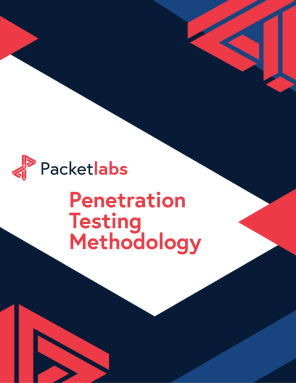How Cybersecurity Teams Can Avoid Burnout
- Why Cybersecurity Teams Are Especially Vulnerable
- Lessons from Other High-Stress Professions
- Strategies for Avoiding Burnout in Cybersecurity Teams
- 1. Normalize Mental Health Conversations
- 2. Manage Workload and Expectations
- 3. Invest in Automation and Tooling
- 4. Build Post-Incident Recovery into the Plan
- 5. Recognize and Reward Contributions
- 6. Foster Career Growth and Continuous Learning
- The Role of Leadership
- Conclusion
Would you like to learn more?
Download our Pentest Sourcing Guide to learn everything you need to know to successfully plan, scope, and execute your penetration testing projects.
Cybersecurity has always been demanding. The constant threat of breaches, the flood of alerts, and the reality that threat actors only need to succeed once creates a uniquely stressful environment. As threat actors grow more sophisticated, the pressure on defenders intensifies. The result? Burnout is now one of the greatest risks to cybersecurity effectiveness.
Left unchecked, burnout leads to errors, high turnover, and weakened defenses, thereby making organizations more vulnerable when they can least afford it. But with the right leadership strategies, culture, and tools, security teams can thrive without burning out.
Why Cybersecurity Teams Are Especially Vulnerable
Unlike many IT roles, cybersecurity operates in a continuous crisis mode. Incidents don’t respect business hours. New vulnerabilities are disclosed daily. Compliance requirements pile on top of operational tasks. The stakes are high, and failures are public.
Research consistently shows that:
More than 50% of security professionals report symptoms of burnout, including anxiety, fatigue, and disconnection
The average security analyst spends 25–30% of their time on false positives, eroding motivation
Cybersecurity vacancies remain high, meaning fewer people are shouldering heavier loads
This combination of high pressure, limited resources, and relentless adversaries makes burnout a systemic issue, not an individual failing.
Lessons from Other High-Stress Professions
Professions like law enforcement, emergency medicine, and aviation have long dealt with high-stakes, high-stress conditions. They’ve developed practices cybersecurity professionals can adopt, such as:
Mandatory rest periods (pilots and first responders) to prevent fatigue-related errors
Debrief and counseling after critical incidents to process stress and maintain mental health
Shared responsibility models that rotate exposure to stressful duties
Cybersecurity leaders can apply these same principles, structuring resilience into the culture vs. leaving it to chance.
Strategies for Avoiding Burnout in Cybersecurity Teams
1. Normalize Mental Health Conversations
Burnout thrives in silence. Leaders must openly acknowledge that stress is part of the job—and that it’s okay to seek help. Providing access to Employee Assistance Programs (EAPs), mental health resources, and encouraging their use removes stigma.
2. Manage Workload and Expectations
Rotate on-call duties so the same people aren’t always under pressure
Set realistic KPIs that reflect quality, not just volume (e.g., prioritizing incident severity over raw ticket counts)
Empower analysts to escalate early instead of “toughing it out"
3. Invest in Automation and Tooling
One of the fastest ways to reduce burnout is to reduce noise. SOAR (Security Orchestration, Automation, and Response) platforms, tuned SIEMs, and well-calibrated alerting systems help eliminate repetitive, low-value tasks, thereby freeing analysts for higher-impact work.
4. Build Post-Incident Recovery into the Plan
Incident response shouldn’t end when the breach is contained. Teams need structured cool-down periods, with reduced rotations and time for training, rest, or cross-team projects.
This mirrors “after-action recovery” in military and law enforcement contexts.
5. Recognize and Reward Contributions
Cybersecurity work often goes unnoticed unless something goes wrong.
Public recognition, bonuses, or even small rewards for extraordinary effort go a long way in preventing burnout. Recognition reinforces purpose—the strongest buffer against fatigue.
6. Foster Career Growth and Continuous Learning
Stagnation is a silent contributor to burnout. Providing access to certifications, conferences, and professional development helps analysts see a future in the field.
Growth opportunities transform stress into motivation.
The Role of Leadership
Burnout is not solved by asking individuals to “be more resilient.” It’s a leadership issue. CISOs, SOC managers, and IT leaders must:
Advocate for adequate staffing to prevent overload
Secure budget for automation and external support where needed
Educate executives on why protecting people is as critical as protecting infrastructure
Security teams are the human firewall. If they fail, technology alone cannot stop an incident. Protecting them must be part of the organization’s cyber resilience strategy.
Conclusion
Cybersecurity will always be high-stress, but it doesn’t have to be unsustainable. By borrowing strategies from other high-pressure fields, investing in automation, and prioritizing the mental health and career growth of their people, leaders can ensure their security teams stay sharp, motivated, and resilient.
Avoiding burnout isn’t just about protecting employees. It’s about protecting the organization’s ability to defend against threats. Because in the end, a burned-out team is the biggest vulnerability of all.
Contact Us
Speak with an Account Executive
Interested in Pentesting?

Penetration Testing Methodology
Our Penetration Security Testing methodology is derived from the SANS Pentest Methodology, the MITRE ATT&CK framework, and the NIST SP800-115 to uncover security gaps.
Download Methodology
Pentest Sourcing Guide
Download our Pentest Sourcing Guide to learn everything you need to know to successfully plan, scope, and execute your penetration testing projects.
Download GuideExplore in-depth resources from our ethical hackers to assist you and your team’s cyber-related decisions.

September 13 - Blog
Why Multi-Factor Authentication is Not Enough
Knowing is half the battle, and the use and abuse of common frameworks shed insight into what defenders need to do to build defense in depth.

November 19 - Blog
The Top Cybersecurity Statistics for 2024
The top cybersecurity statistics for 2024 can help inform your organization's security strategies for 2025 and beyond. Learn more today.

October 24 - Blog
Packetlabs at SecTor 2024
Packetlabs is thrilled to have been a part of SecTor 2024. Learn more about our top takeaway's from this year's Black Hat event.







